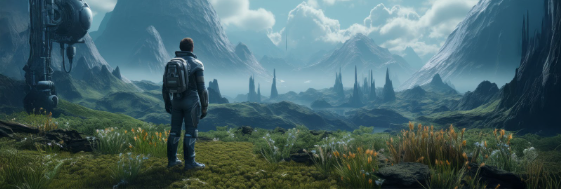In the world of sports and athletics, we often hear coaches talk about whether to centralize their team strategy around one core approach or split responsibilities to take advantage of specialized skills. Interestingly, the gaming industry—particularly in the realm of game art—faces the very same dilemma.
The question boils down to this: when should studios centralize their creative work in one place, and when is it smarter to split the load between an in-house AAA game art studio and a game art outsourcing studio?
It’s a balancing act that game publishers and developers wrestle with every day, especially as gaming experiences grow more immersive and the demand for high-quality visuals rises. Much like building a sports team roster, the right strategy depends on context, goals, and resources.
Why Centralization Appeals to Studios
Centralization means keeping all art creation under one roof, often in an in-house AAA game art studio. Here’s why many studios lean toward this:
- Creative Consistency
With everything handled internally, you get tighter control over the game’s artistic direction. Assets—from character models to environments—flow from the same pipeline. This ensures every detail feels like part of a unified whole. - Faster Feedback Loops
Game development is iterative. Having artists down the hall means directors can give feedback instantly, avoiding lengthy back-and-forth cycles. For games with tight deadlines, this can be a lifesaver. - Protecting Intellectual Property
Sensitive projects—especially high-budget AAA titles—demand strong protection of assets, designs, and ideas. Keeping everything in-house reduces external exposure.
In sports terms, centralization is like a team that keeps its best athletes at the core, always practicing together and moving as a single unit.
Why Splitting Makes Sense
On the other side of the debate, splitting responsibilities by engaging a game art outsourcing studio brings its own advantages:
- Scalability During Crunch
Game development has peak seasons—moments where studios need more artists than they can feasibly hire full-time. Outsourcing lets them scale up quickly without the overhead of permanent staff. - Access to Specialized Talent
Not all AAA studios have experts in every niche. Need a team dedicated to photorealistic 3D foliage? Or a group that’s mastered stylized 2D animation? Outsourcing taps into highly specialized skill pools worldwide. - Cost Flexibility
Centralized in-house teams are expensive to maintain year-round. Outsourcing offers flexibility, letting studios pay only for what they need, when they need it.
Think of it like athletics again: splitting responsibilities is like having specialized coaches—one for sprinting, another for strength training, another for nutrition. Each expert brings value that a single central coach might not cover as deeply.
The Middle Ground: Hybrid Approaches
Here’s the truth: most modern studios don’t go all-in on just one approach. Instead, they adopt a hybrid model, using their in-house AAA game art studio as the creative anchor, while partnering with game art outsourcing studios for additional muscle.
For example:
- Core character concepts might stay centralized in-house.
- Background assets or secondary props could be outsourced.
- During final polishing, outsourced teams might handle detail-heavy tasks while in-house artists focus on signature features.
This hybrid approach ensures that the vision stays consistent, while still benefiting from external capacity and specialization.
When to Centralize vs. When to Split
So, how do you know which approach is right? It depends on the stage of the project and your goals.
- Centralize when:
- The project is early-stage and still defining its artistic vision.
- Protecting intellectual property is mission-critical.
- You’re building flagship assets that define the game’s identity.
- Split when:
- The project is moving toward production scale and needs sheer volume of assets.
- You want access to niche expertise not available internally.
- Deadlines are tight, and you need more hands without long-term hiring.
A smart studio leader knows how to shift between these modes—sometimes even within the same project phase.
Lessons for Sports and Beyond
Interestingly, the split vs. centralize debate isn’t unique to gaming. Sports franchises, athletic organizations, and even fitness businesses face the same challenge. Do you build everything internally—coaching, training, medical staff—or do you outsource specialized services like performance analytics, physiotherapy, or even marketing?
The gaming industry shows us that the best approach isn’t binary. A world-class football team might centralize its training philosophy but still bring in outside experts for nutrition or recovery. Similarly, AAA game studios centralize their artistic DNA but rely on outsourcing for scale and diversity.
Final Thoughts
In the end, the question of whether to split or centralize comes down to resources, timing, and the unique needs of the project. Centralization builds consistency and identity, while splitting adds flexibility and specialization.
Just like in sports, no single playbook works for every season. The strongest teams—and the most successful games—are built by leaders who know when to hold things close and when to bring in outside expertise.
In the evolving world of game development, the partnership between an AAA game art studio and a game art outsourcing studio isn’t a rivalry—it’s a collaboration. Together, they ensure that games not only meet deadlines but also reach the highest artistic standards, delighting players and pushing the industry forward.

